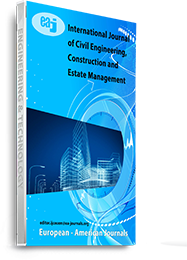Non-drainage shear quality, Cu generally characterizes soft clay. Estimates of Cu values of less than 12.5 kPa are related to soft clay, but soft clay has solid shear quality moving somewhere in the range from 12.5 kPa to 25 kPa. Although the soft sheer quality is low, they encounter high compressibility after stacking. This is the reason why soft clay is considered dangerous for the formation. Also, geo-forms are modern materials and are taken in low weight units (usually 20 kg / m 3) compared to dirt. When thickness reaches 1.0% to 2.5% of soil EPS, compressive strength will range from 70 kPa to 140 kPa and modulus of elasticity will be in the range of 5 MPa to 12 MPa, as shown by Horvath (2010). Geo-form square EPS is used for various geotechnical applications as lightweight fillers. Therefore, the primary objective of this test is to investigate the characteristics of geological techniques from soft clay containing geo-form beads and step cement dust. Likewise, we explore the possibility of planning a mixture of low-quality drill contents. To concentrate the soft clay effects on the liquid state and the compaction properties of the new filling, the test work was carried out in two mixed sets (A & B). Specific proportions are added to the mixture to investigate the effect on flow consistency, dry unit weight, unlimited compression quality, and sheer quality. The effect after testing directed to the material shows that the cement side step residues and excess sand castings can be used effectively to develop a flow filling material strategy that can be compressed on its own and can be stamped by it. The quality of compression from the non-geo-foam test mixture is in the range of 271.8 kPa to 1405.14 kPa in the CBPD, somewhere in the range of 3.99% to 17.98%. The attached file honors Geo-foam which collects a place in the range of 50 kPa to 20 kPa somewhere in the range of 0.32% to 1.35% in Geo-foam. The scrubbing point with geo-foam spreads is in the range of 0.36% to 1.40% somewhere in the range of 10 to 22 kPa in the CBPD.
Keywords: Geo-foam Beads; Bypass Cement Dust; Flowable Fill; Shear Strength

